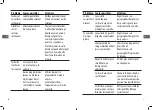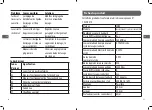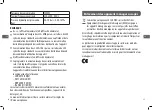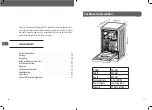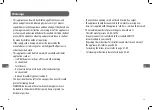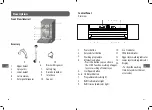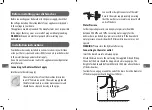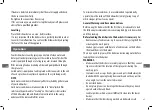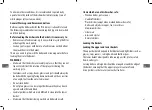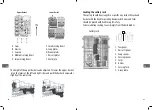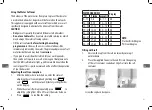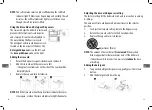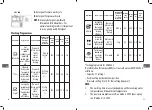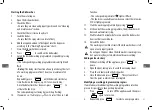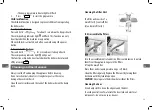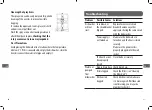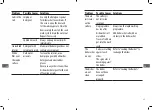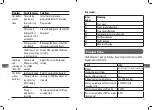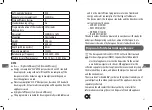
To minimise these conditions, it is recommended to periodically
operate/rinse the inside of the dishwasher (empty) using 1 cup of
white vinegar (at least once a week)�
Before using the dishwasher for the first time, it is advisable to read
the following recommendations concerning dish types to be washed
and their loading�
Before loading the dishes into the baskets it is necessary to:
• Remove coarse food remains, e�g� bones, which may clog the filter
or damage the wash pump�
• Soak any pots or pans with burnt-on food remains on the bottom
then load them into the basket�
There is no need to pre-wash the dishes under running water before
loading them into the basket�
WARNINGS:
• Make sure that the dishes are securely in place so that they cannot
tip over or obstruct the rotation of the spray arms during the
washing cycle�
• Containers such as cups, bowls, glasses and pots should always be
loaded with the opening facing downwards and with any cavities
at an angle, to allow the water to drain out�
• Do not stack dishes�
• Do not place glasses too close together because they may knock
against each other and break�
• Load large items which are most difficult to clean into the lower
basket�
• Make sure that the items being washed are dishwasher-safe�
General Warnings and Recommendations
Items which are not dishwasher-safe:
• Wooden dishes, pots or pans
• Handcrafted items
• Plastic dishes (except when marked dishwasher-safe)
• Dishes and objects in copper, tin, zinc or brass
• Aluminium dishes
• Silverware
• Glass and crystal
• Decorated items
Loading the upper and lower baskets
The upper basket is designed to hold delicate and light items such as
glasses, cups, saucers, serving bowls and shallow pans�
The lower basket is designed to take saucepans, lids, plates, salad
bowls, cutlery etc�
Serving dishes and large lids should be arranged around the edge of
the basket, ensuring that the upper spray arm can turn freely�
Arrange items so that water can reach all surfaces�
Loading the Baskets
47
46
GB
GB







